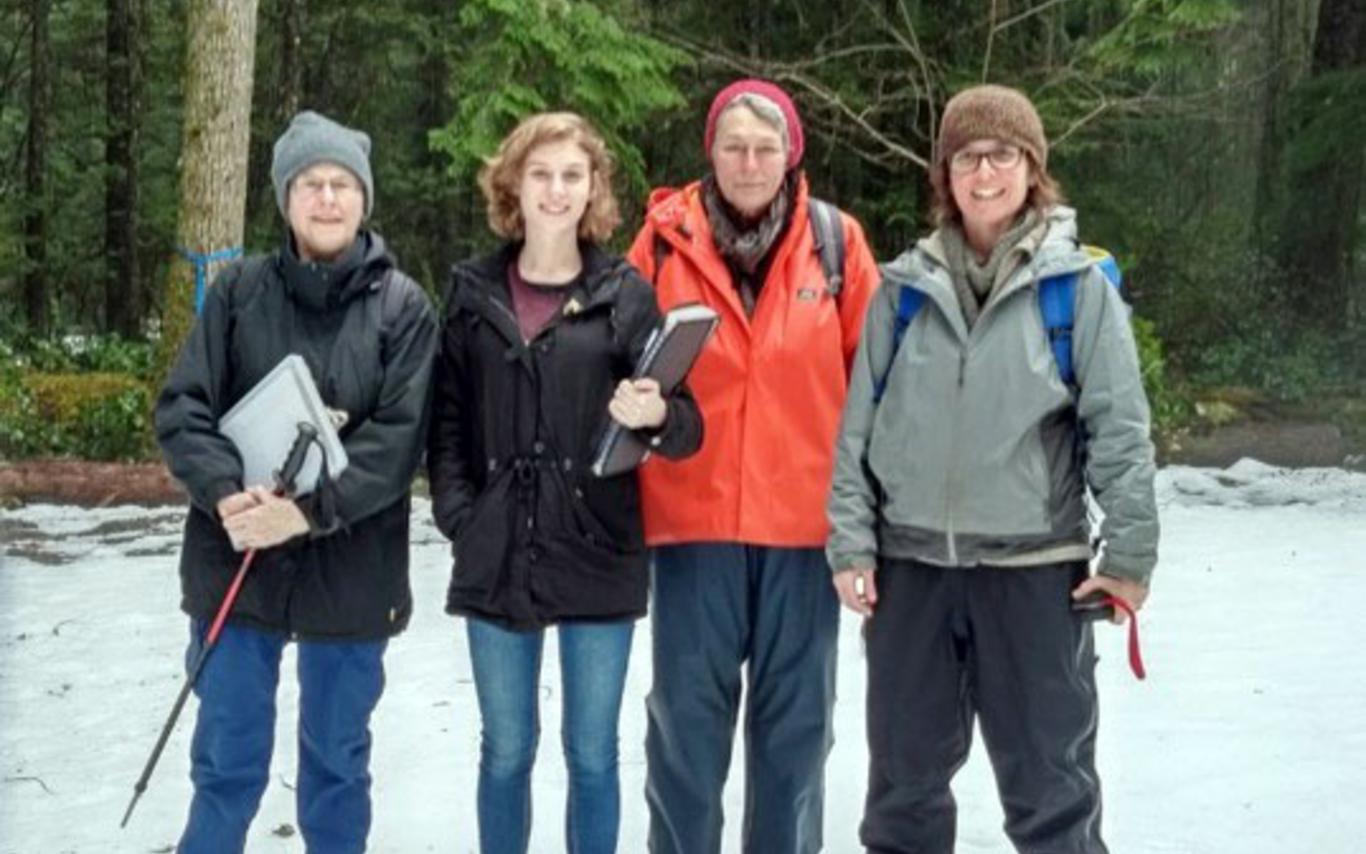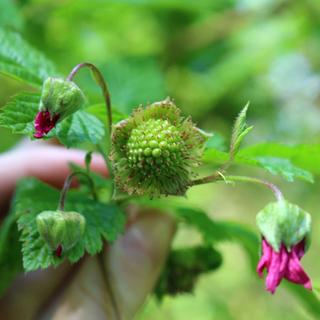This year I have been lucky enough to collect data for the plant phenology project at Milner Gardens and Woodland in Qualicum Beach. Phenology is the study of the timing of seasonally reoccurring biological events like bud break, flower blooming, pollen release, and leaf fall. The timing of these events is strongly linked to variables like temperature and precipitation, making it a strong indicator of climate change. Phenology also plays a crucial role in relationships between species. If mutualistic species respond differently to climate change, their phonology will be out of synch. For example, the spring emergence of bees has been found to have advanced by roughly 10 days in the last 130 years, most of which has taken place since 1970. If this continues, it may be detrimental to local vegetation that doesn’t adapt in the same way because bees are primary pollinators.
To understand how climate change is affecting native plants at Milner we are tracking the phenology of 28 specimens of 11 different species. We observe these plants at least once a week. Our team is made up of myself, my co- worker Larissa, Heather Klassen (a professional agrologist with the Ministry of Forests Lands and Natural Resource Operations), and a group of expert volunteers from Milner and beyond. We always have a fantastic time discussing the intricacies of phenology, cracking jokes, and chatting about our week’s adventures while we work.
Milner is such a beautiful place to be able to do research! We always make sure to take a walk through the fragrant and colourful rhododendron garden and keep our eyes up in the tall trees where many bald eagles have built nests. My favourite attraction at the gardens are the magnificent 500+ year old Douglas Fir trees that can grow to over 70 m tall! Although the ocean view is a close second.
This is a long term, ongoing project that will eventually create a database we can use to analyze shifting phenophases in relation to the climate as recorded by our weather station at Milner. We’ve been comparing observations made in person with observations made based on time lapse photographs. Soon, we’ll be putting field cameras on specimens at the top of Mt. Arrowsmith to study the differences in climate change adaption along elevation. I’ve learned so much about phenology and forests from our observation crew in the last year and I’m very glad we get to keep working together in this beautiful location.
ADVENTURE TIPS:
- Make sure to stop by the Camellia Room at Milner for some tasty afternoon tea and scones!
- Spring is a fascinating time to get outside and learn about phenology! Next time you’re on a walk or a hike take a close look at any needles, leaves, cones, and flowers. If you focus on a few species you’ll probably notice some pretty cool stuff.
- In addition to guided tours, Milner often has special events like Art Walks and Light Ups.
- If you’d like to start your own phenology project for research or fun, check out Natures Notebook and you can contribute to a citizen science database from your own backyard!

